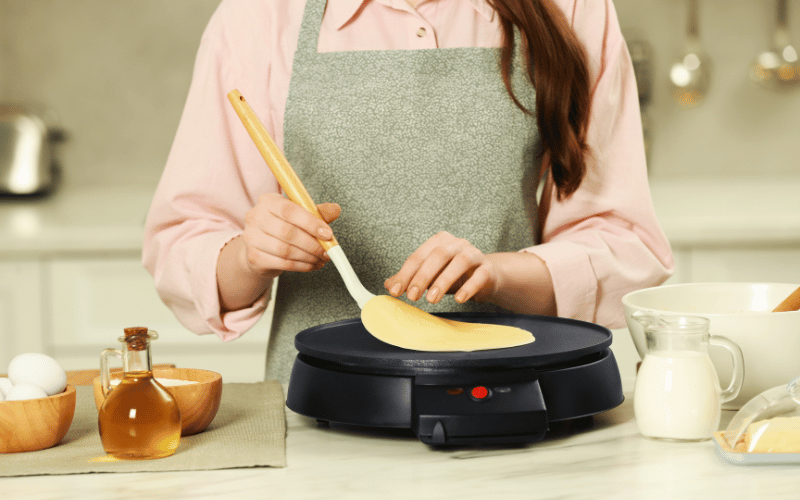In the heart of every kitchen, the unassuming grater emerges as a culinary hero, a versatile tool with the power to transform ordinary ingredients into extraordinary creations. From adding zest to your dishes to achieving the perfect shred, the grater’s significance transcends its modest appearance. In this comprehensive exploration, we delve into the multifaceted world of graters, uncovering their indispensable roles beyond the commonplace use of cheese. Prepare to embark on a culinary journey as we unveil the art of zesting citrus fruits, shredding a myriad of vegetables, and even grating delicate spices.
This blog post serves as your guide to unlocking the full spectrum of grater uses and functions, empowering you to elevate your kitchen prowess and culinary creations.
Types of Graters Uses

Box Graters
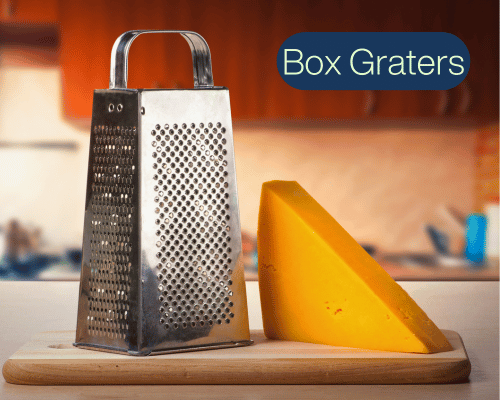
Box graters, the workhorses of the kitchen, embody a practical and versatile design. Typically composed of four sides, each featuring different grating surfaces – ranging from coarse to fine – box graters offer a comprehensive solution for various culinary tasks. The ergonomic handle ensures a comfortable grip, while a sturdy base provides stability during use.
Additionally, some box graters include slicing and julienne features, enhancing their utility. Made from durable materials such as stainless steel or high-quality plastic, these graters are built to withstand the rigors of daily kitchen use.
Box graters excel in handling an array of ingredients. From effortlessly grating cheese for pasta dishes to creating fine shreds of vegetables for salads, their versatility knows no bounds. The coarse side tackles robust tasks like shredding potatoes for hash browns, while the finer sides come into play for zesting citrus fruits or grating Parmesan with precision.
Microplane Graters
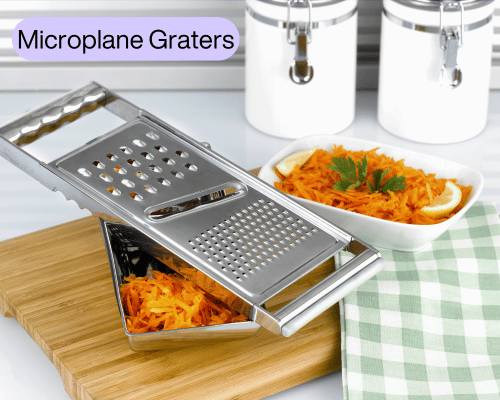
Microplane graters redefine precision in the kitchen with their razor-sharp blades and specialized design. Unlike traditional graters, Microplanes feature small, closely spaced teeth that produce exceptionally fine results. This design allows for the extraction of intense flavors and textures, making them ideal for tasks that demand a delicate touch.
Microplane graters shine in tasks requiring finesse. Zesting citrus fruits becomes an art, as the Microplane effortlessly transforms the outer peel into fragrant, flavorful zest. Beyond that, these graters handle delicate ingredients like nutmeg and chocolate with finesse, ensuring a uniform and exquisite texture that enhances the overall culinary experience.
Rotary Graters
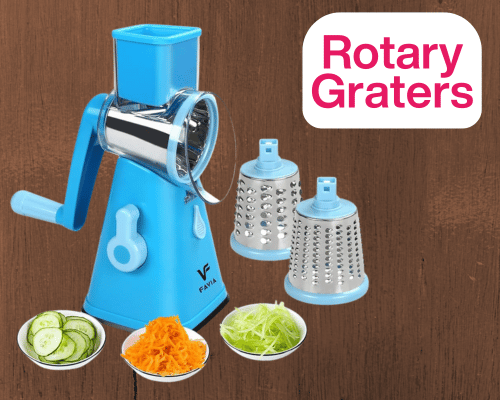
Rotary graters introduce an ingenious mechanism to the grating process. Featuring a cylindrical drum with sharp blades, these graters operate with a simple rotary motion. Users place the ingredient in a chute, turn the handle, and witness efficient grating. The rotary mechanism not only streamlines the process but also minimizes effort, making it a convenient choice for various kitchen tasks.
Rotary graters excel in handling hard cheeses, effortlessly turning blocks of Parmesan or aged cheddar into finely grated goodness. The efficient rotary motion also makes them adept at processing dense vegetables like carrots and beets. Whether for garnishing dishes or incorporating ingredients into recipes, rotary graters offer a swift and efficient solution, saving time and ensuring consistent results.
Grater Uses Beyond Cheese
Zesting Citrus Fruits
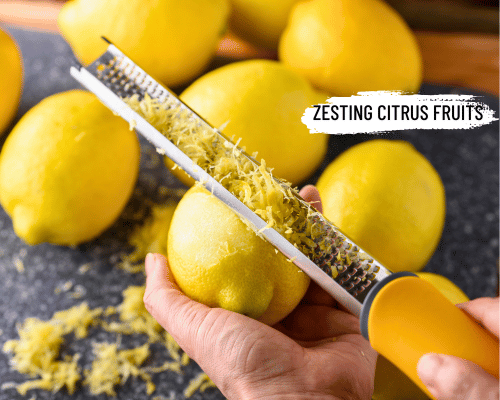
Zesting citrus fruits adds a burst of vibrant flavor to dishes, and a grater is a perfect tool for the job. Begin by selecting fresh, unwaxed citrus fruits, preferably organic. Wash and dry the fruit thoroughly. With a firm grip, hold the grater at a slight angle and gently run the fruit across the fine grating surface. Rotate the fruit to ensure even zest extraction, taking care to avoid the bitter white pith beneath the outer layer. The result is a fragrant zest ready to elevate your culinary creations.
To maximize flavor extraction, choose a grater with small, sharp teeth. Apply gentle pressure while zesting to capture the aromatic oils without reaching the bitter pith. Rotate the fruit intermittently to use fresh grating surfaces. Use the zest immediately for the most potent flavor or store it in an airtight container for future use. Zested citrus adds a zing to desserts, marinades, and savory dishes, making it a versatile and essential technique for any aspiring chef.
Grating Vegetables
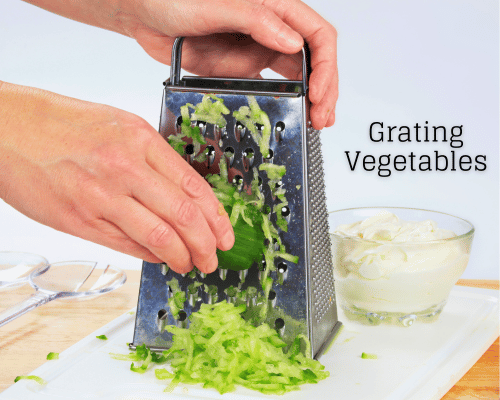
Grating vegetables opens up a world of possibilities for adding texture and flavor to your dishes. Opt for vegetables with a firm and dense structure, such as carrots, zucchini, and beets. These veggies grate well and can be easily incorporated into a variety of recipes.
Grated vegetables add a delightful crunch and nutritional boost to both cooked and raw dishes. Try incorporating grated carrots into muffin batter for added moisture and sweetness, or mix grated zucchini into savory pancakes for a creative twist.
Grated vegetables also make excellent toppings for salads, pizzas, and sandwiches, providing a fresh and vibrant touch to your meals. Experiment with different combinations to discover new and exciting ways to enhance your culinary creations.
Nutmeg and Spice Grating
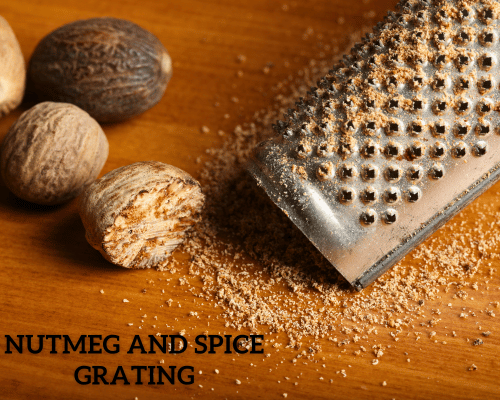
While commonly associated with cheese and vegetables, graters are also invaluable for grating spices, unlocking their full aromatic potential. Nutmeg, in particular, benefits from this method, allowing for a fine and consistent texture that enhances both sweet and savory dishes. Choose a grater with a fine surface for optimal results.
Grating nutmeg and spices fresh with a grater intensifies their flavors compared to pre-ground alternatives. The essential oils released during grating provide a more robust and aromatic experience, elevating your culinary creations. Consider incorporating freshly grated nutmeg into desserts, sauces, and warm beverages for a nuanced and irresistible taste that showcases the true essence of the spice.
Shredding with Precision
Cheese Shredding Techniques
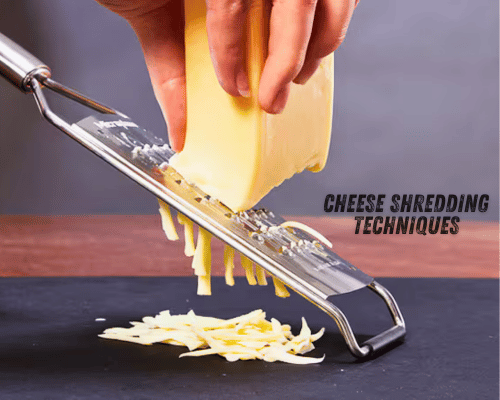
Shredding Different Types of Cheese Effectively: Mastering cheese shredding techniques is an art that enhances the texture and flavor of your culinary creations. For hard cheeses like cheddar, use a firm grip and apply steady pressure against the grater. Soft cheeses like mozzarella benefit from a gentler touch to prevent clumping. Select the appropriate grating surface based on your desired shred size, ensuring an even distribution of cheese in your dishes.
Shredded cheese serves as a versatile ingredient in a myriad of recipes. From classic pasta dishes and gooey grilled cheese sandwiches to salads and casseroles, the applications are endless. The increased surface area of shredded cheese ensures quick melting, making it an essential component for achieving cheesy perfection in both savory and sweet dishes.
Shredding Vegetables
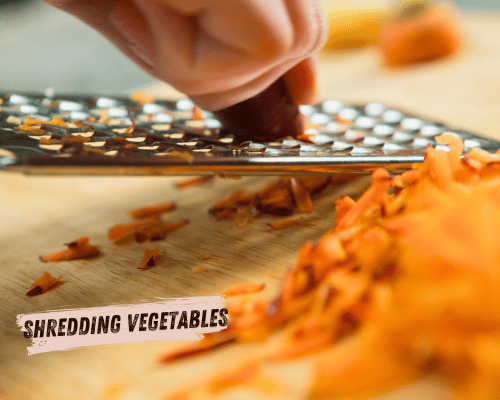
Unlock the potential of vegetables by incorporating shredded delights into salads, coleslaw, and various dishes. A grater provides the perfect tool for achieving uniform shreds, enhancing the overall presentation and texture of your culinary creations.
Whether you’re aiming for delicate carrot shreds in a refreshing salad or coarser zucchini shreds for a savory fritter, the grater allows you to customize the texture of shredded vegetables to suit diverse recipes. Experiment with different vegetables and grating techniques to elevate the visual appeal and taste of your dishes, adding a fresh and crisp element to every bite.
Maintenance and Care Tips
Cleaning Different Types of Graters: After each use, promptly clean the graters to prevent food residue buildup. Use a brush or sponge to reach between the grating teeth. For stubborn residues, soak the grater in warm soapy water before cleaning.
Proper Storage to Prolong the Life of the Grater: Store graters in a dry and well-ventilated area to prevent rust. Consider using protective covers or storing them in designated slots to avoid damage and maintain their sharpness.
Sharpening Blades for Optimal Performance: Regularly sharpen grater blades using a fine abrasive or specialized sharpening tool. This ensures continued efficiency and longevity, allowing your grater to perform at its best.
Grater Innovations
Highlighting Modern Grater Features
Modern graters come equipped with innovative features to enhance user experience. Some boast ergonomic designs for comfortable handling, while others incorporate interchangeable blades to accommodate various grating styles. Anti-slip bases and safety features are also common, ensuring stability and preventing accidents during use.
Electric Graters and Their Advantages
Electric graters represent a leap forward in convenience and efficiency. Powered by electricity, these graters automate the grating process, reducing manual effort. They offer variable speed settings and interchangeable blades, catering to different grating needs. Electric graters are particularly advantageous for those with physical limitations or time constraints in the kitchen.
Future Trends in Grater Design and Functionality
The future of graters holds exciting possibilities, with advancements in materials, blade technology, and smart integration. Anticipate greater designs that prioritize sustainability, multifunctionality, and perhaps even digital features for precision control. As kitchens evolve, graters are likely to follow suit, becoming more intuitive, efficient, and adaptable to the ever-changing needs of home cooks and professional chefs alike.
In this exploration of greater uses and functions, we’ve uncovered the diverse roles these kitchen essentials play beyond the expected. From zesting citrus fruits to shredding vegetables with precision, the grater proves to be a culinary powerhouse. Remember the unique features of box graters, Microplane graters, and rotary graters, each offering its distinct advantages. As you embark on your culinary adventures, embrace the versatility of your grater – experiment, innovate, and let its multifunctionality elevate your kitchen creations to new heights.

Hey There, I’m Monica, Mom of two. This is my personal blog site. Here I write about Kitchen Tips Tricks, Recipes, and Review the products I use.
I hope you enjoy the article. Give me feedback on how I’m doing with my blog. I would appreciate it so much.
Have a great day! 🙂
[Follow me on Twitter]

